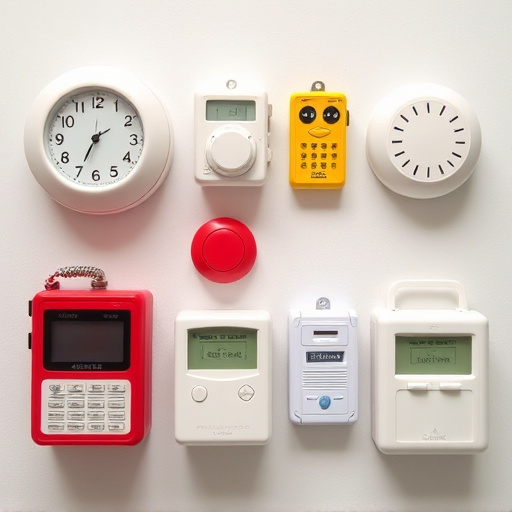Maximum decibel (120dB+) personal alarms deter threats with loud sounds, offering vital self-defense in emergencies. Key specs include sound pressure level (SPL) of at least 120 dB and duration of 120 seconds or more. Water-resistant design ensures reliability in diverse conditions. Ideal for outdoor safety, these alarms signal for help over long distances, disorienting attackers, and empowering individuals to take control of their safety.
Staying safe while on-the-go is paramount, and personal alarm devices with built-in alarm functions offer a powerful tool for self-defense. In this article, we’ll explore how these compact yet potent gadgets can enhance your security. From understanding the key features to identifying maximum decibel levels as specifications, we’ll guide you through effective use cases. Learn about the best practices for personal alarm safety and discover why these devices are essential accessories in today’s world, ensuring you’re prepared with every step you take.
- Understanding Personal Alarm Safety Features
- Maximum Decibel Personal Alarms: Key Specifications
- Effective Use Cases for Personal Alarm Devices
Understanding Personal Alarm Safety Features
Personal alarm safety devices equipped with high-decibel alarms are powerful tools for self-defense and emergency situations. The key feature, maximum decibel levels, ensures loud, startling sounds that can attract attention and deter potential threats quickly. These alarms often include sensitive sensors and easy-to-use activation mechanisms, allowing users to trigger them with just a press of a button or a quick shake.
Understanding how these safety tools work is essential for effective use. The maximum decibel level, typically measured in hertz (Hz), can range from 120dB to 130dB or higher, making them significantly louder than everyday household sounds. This intense volume serves as a strong signal, increasing the chances of drawing help and escapement from dangerous scenarios. Knowing how to activate the alarm and practice its use in safe environments can prove invaluable for real-world situations that require personal safety.
Maximum Decibel Personal Alarms: Key Specifications
When considering a maximum decibel personal alarm for safety, it’s crucial to look at key specifications that ensure its effectiveness in high-noise environments or situations where distance from the assailant may be an issue. The primary metric here is the alarm’s sound pressure level (SPL), measured in decibels (dB). A powerful personal alarm should produce a minimum of 120 dB, which is approximately the same loudness as a power saw or a siren. This high SPL ensures that even in bustling environments or when an attacker is close by, the alarm will be audible and jarring enough to startle and deter them.
Additionally, the duration of the alarm’s sound is critical. A quality personal alarm should maintain its maximum decibel level for at least 120 seconds, providing ample time for help to arrive or for you to escape safely. Other features like water resistance and a durable design further enhance the reliability of the device under various conditions, making it a robust addition to your personal safety toolkit.
Effective Use Cases for Personal Alarm Devices
Personal alarm devices with high decibel outputs are versatile tools for ensuring personal safety in various situations. One of their most effective use cases is during outdoor activities, such as hiking or camping. In remote areas where help may be far away, a powerful personal alarm can deter potential assailants and signal for assistance quickly and efficiently. The maximum decibel level ensures that the sound travels over long distances, increasing the chances of being heard in emergencies.
Additionally, these devices are invaluable for women who often face safety concerns while walking alone or late at night. Carrying a personal alarm offers a sense of security and peace of mind, enabling individuals to feel more confident navigating unfamiliar surroundings. Moreover, they can be useful in self-defense scenarios, temporarily disorienting an attacker long enough for the user to escape or summon help. High-decibel alarms are thus not just tools but powerful means of empowering individuals to take control of their safety.
Personal alarm devices with built-in alarms are powerful tools for enhancing personal safety. By understanding key specifications, such as maximum decibel levels, and effective use cases, individuals can make informed decisions about which device best suits their needs. Investing in a high-decibel personal alarm, like those capable of 120dB or more, ensures maximum impact when activated, making them essential tools for safety and peace of mind in various situations.
